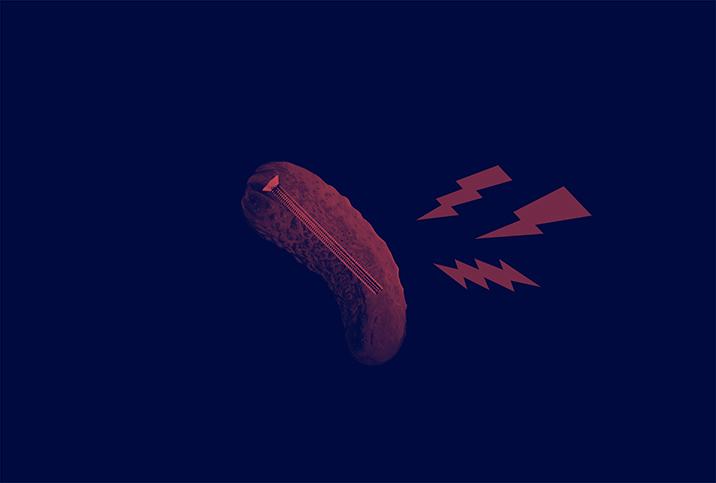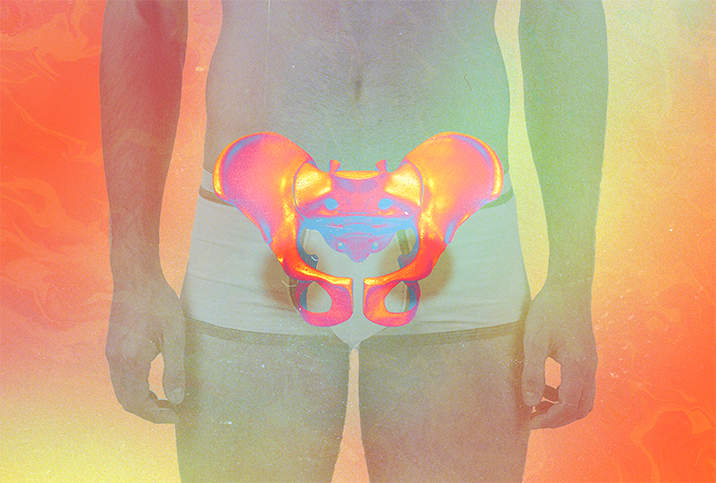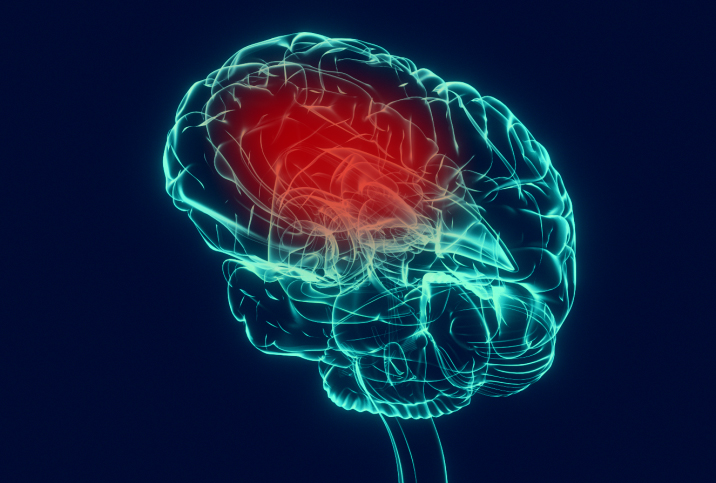Holy Oxymoron: What the Hell Is Hard Flaccid Syndrome?

People love a good oxymoron. You know, those delightfully self-contradictory phrases that make sense right up until you devote some thought to them. Classics include "jumbo shrimp," "devout atheist" and "awfully good."
But the Kingdom of Oxymoronia (Editor's note: Yes, this is a made-up word, but all words are made up!) may soon have a new monarch: hard flaccid syndrome.
Huh? HF syndrome? First of all, how can something be both hard and flaccid? (Second, we are still talking about dicks, right?)
What is hard flaccid syndrome?
If you can remember all the way back to the dark ages of 2011, a popular meme was making the rounds, captioned: "I have the weirdest boner right now."
This is a perfect encapsulation of HF syndrome. It's a name men have given to a set of conditions that primarily involves being semi-erect while in a flaccid state. Other symptoms can include:
- Penile pain
- Pain in the perineum (the area between the scrotum and the anus)
- Feelings of cramping or clenching in the penis that shortens it
- Erectile dysfunction
- Penile numbness
- Pain during ejaculation
- A rubbery feeling to the penis
- The head remaining soft and/or cool to the touch even while the shaft is engorged
- Other changes in the appearance of the penis
"[Hard flaccid syndrome] gained popularity on patient forums first, and the naming originated from there," said Faysal A. Yafi, M.D., an associate professor of urology at the University of California at Irvine. "Over time, physicians started recognizing that more and more patients were presenting complaining that they have HF syndrome."
Syndrome of confusion and contradiction
The naming of the condition isn't the only confusing thing about this "weirdest boner," either. Even some symptoms of HF syndrome are self-contradictory. For instance, as the name implies, patients may present with a painful, chronically semi-hard penis even when they're not aroused. Yet, at the same time, they often have "a loss of erectile rigidity," according to a survey of 16 papers conducted in 2020 by Basic and Clinical Andrology.
So, a hard flaccid penis is kind of hard when there's no call for it to be and not really hard enough when it's time for sex.
But the oddness of the condition's symptoms and the fact that the name didn't originate in the medical community doesn't mean hard flaccid syndrome isn't real.
"I don't think it's something that should be faced with skepticism," said Petar Bajic, M.D., a urologist with the Cleveland Clinic. "I think the symptoms are very real. They're well-explained when we think about the function of erections, what we know about the physiology of the penis and what we know about the internal pelvic floor muscles."
Breaking HF down into subtypes
Bajic has seen enough patients with hard flaccid syndrome that he talks about there being at least two distinct subtypes.
HF, anxiety and blood flow
The first type of HF syndrome presents similarly to ED but has a twist. Men with this type show signs of anxiety that may have led to reduced blood flow to the penis, and thus caused changes in the appearance of the penis.
"When a man is worried about what's going on with his penis, he can actually get a physical change, where the arteries constrict and prevent blood from going into the penis," Bajic said. "So that might mean that when the penis is soft, maybe it looks different than he's used to. Maybe it feels different."
HF and pelvic floor muscles
With the second type of HF syndrome, men don't appear to have issues with anxiety so much as with the pelvic floor muscles, which are the sheet of muscles connected to the large muscle groups in the legs, lower back and buttocks that provide a base of support for your pelvic organs. That means pelvic floor muscles play a key role in urination and bowel movements.
But crucially to the conversation around HF syndrome, pelvic floor muscles are also key components for healthy erections and ejaculation.
"If those muscles are chronically tight, they may not relax when they're supposed to relax to allow the base of the penis to fill up with blood, which can further change the way the penis looks and feels, or its ability to get hard," Bajic said. "That similarly can lead to the symptoms or signs of what men call hard flaccid syndrome."
Understanding HF through the lens of the pelvic floor muscles' function helps explain another common component of HF syndrome: painful ejaculation.
"If the muscles are dysfunctional or strained, or tense, and you're squeezing those muscles with ejaculation, it's going to hurt," Bajic said. "It's like if you have a charley horse on your bicep and you go to do bicep curls in the gym. It's going to hurt."
Trauma
Another possible cause of HF syndrome is injury or trauma.
"Patients often will report injury with masturbation or jelqing (a penis-stretching exercise) as the precipitating factor," Yafi said.
He went on to say possible traumatic causes for HF include, among others:
- Trauma with injury to the pudendal nerve and artery
- Pelvic floor muscle problems
- Chronic pelvic pain syndrome (CPPS)
- Pelvic floor tightening
It's complicated
The story about HF syndrome is in its infancy, so it is still developing. To men's benefit, clinicians such as Yafi and Bajic are developing protocols and systems needed to understand and treat it.
Bajic takes what he calls a "bio-psycho-social" approach to determine which symptoms and underlying causes are the biggest challenges to which patients, and then treats them according to their specific issues.
"We used to label all these guys back in the day as 'psychogenic erectile dysfunction,' and we'd send them all to therapy," Bajic said. "That was way before we understood what the pelvic floor was and how it works."
Even in 2021, the pelvic floor is still not well understood by many doctors.
"We're just starting to scratch the surface on how these symptoms occur," Bajic said, "and what they might be related to."


















